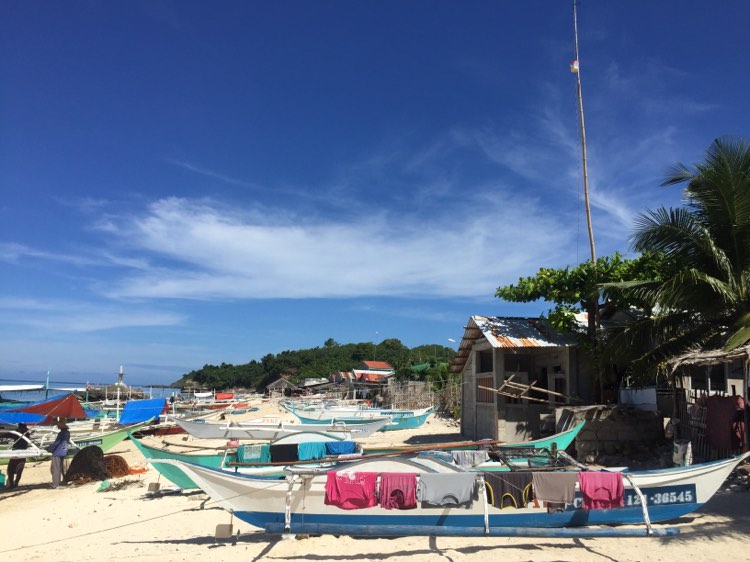
The shorelines of Poblacion proper. | Doris Bongcac
MANDAUE CITY, Cebu – Have you heard of Cebuanos saying “nikatkat pa ko og lubi aron makasignal? (I climbed a coconut tree to get a signal)”
This is somewhat true when you are in Carnaza Island, an island barangay in Daanbantayan town in northern Cebu.
But its a little over 2, 000 residents do not literally have to climb a coconut tree to send a message or make a call, instead they stay close to coconut trees found on a hill in Poblacion proper to get a cellphone signal.
“Inig ka hapon daghan ang magpundok dapit sa lubi aron makakuha og signal,” a resident said.
(A lot of people gather near the coconut trees in the afternoon to get a signal.)

The area where the tallest coconut tree is located is one of the few places on the island that is reached by network signal. | Doris Bongcac
And this is just one of the creative ways that island residents practice to get a signal to make a call or receive or send a message.
Since the island is located on the Visayan Sea or about 18 nautical miles or at least 30 kilometers from mainland Daanbantayan, even the internet signal is a major concern here.

Carnaza Island is located on the Visayas. | Google Maps
But no worries!
Islanders have found a creative way to address that also.
They place their WiFi routers inside pails or plastic containers and hang these on bamboo poles.

Bamboo poles where WiFi routers are hanged line up a community road in Poblacion proper. | Doris C. Bongcac
They then erect their bamboo poles on top of their roofs or outside of their homes to get internet signal.
Even their solar panels are also elevated.
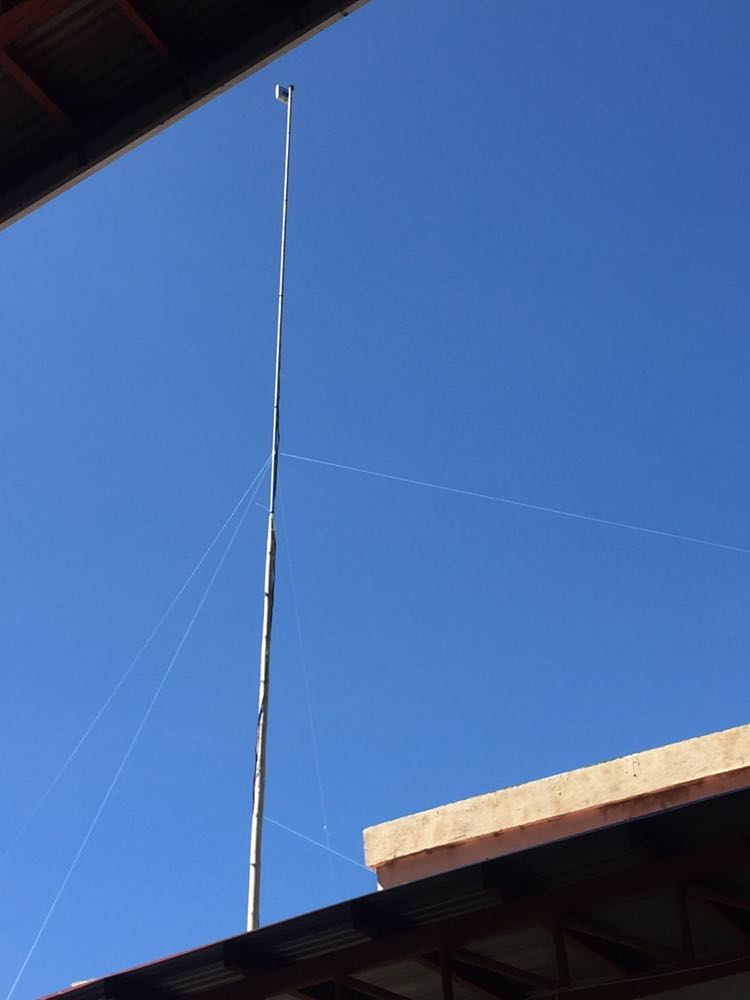
The WiFi router at the Carnaza Elementary School is placed on top of the school’s roof. | Doris Bongcac
And starting at dusk, those who can afford it start to operate their generator sets to power their homes.
“Pero dili pwede dugayon ang suga kay mahal man ang crudo,” says island resident Victoria Bernaldo.
(But we do not use our lights for a long period of time because of the expensive cost of fuel.)
Bernaldo said that genset powered lights are normally turned on from 7 p.m. to 9 p.m.
Those, who cannot afford to buy their own generator, started to the use solar power sometime in 2017.
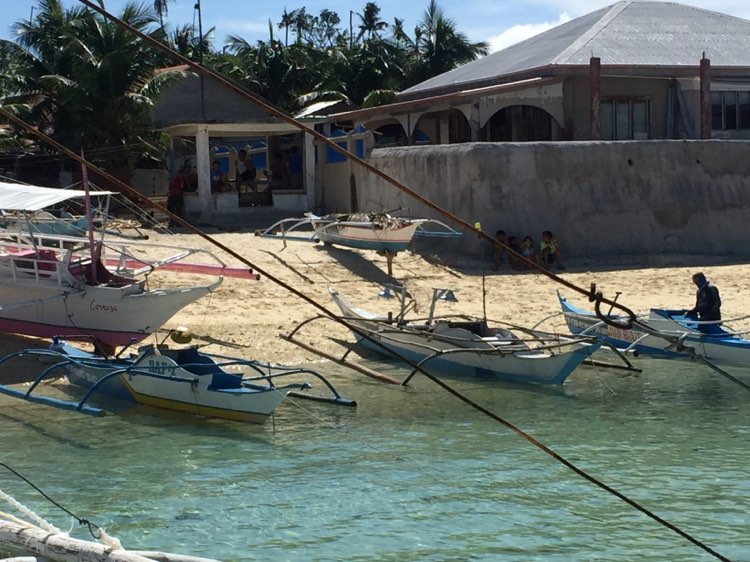
Island residents, who can afford, started to buy their solar panels in 2017. | Doris Bongcac
Bernaldo got their solar panel set just last year from the savings that her husband, Allan, earned from working as an overseas Filipino worker for five years and before the pandemic hit.
A set that already includes a small solar panel, which they source from a supplier in the nearby Masbate province, cost at least P10,000, she said.
For those, who don’t have that amount of cash, either they get their power from a genset owner and share the fuel cost or continue the use of gas lamps at night.
Carnaza Barangay Captain Roquita Rosell said that most of their over 600 households had power now.
And just this March, their elementary schools – the Carnaza Elementary School and the nearby high school and the Patao Elementary School – were also electrified with the help of Project RELY that is funded by the European Union.
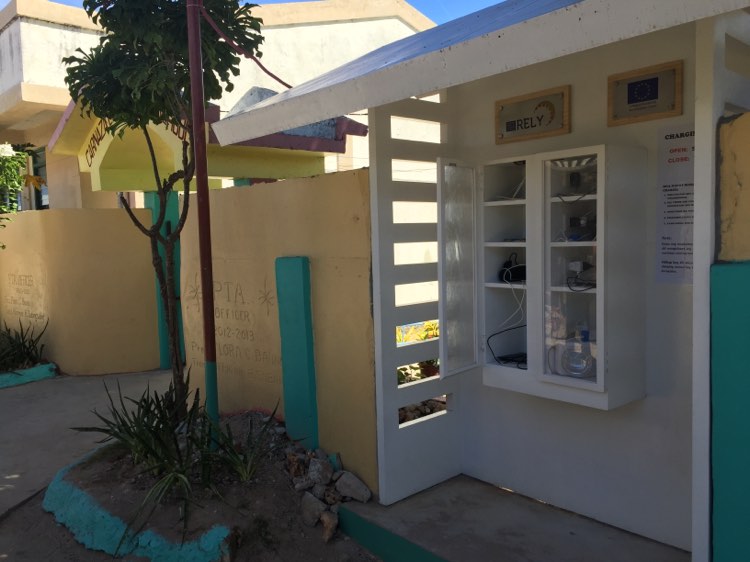
A free charging station is found outside the school premise. | Doris Bongcac
School officials also share their power supply to residents and even tourists, who needed to charge their cellphones or even their flashlights.
All they have to do is visit the free charging station that is located outside of the Carnaza Elementary School in Poblacion proper that operates from 5:30 a.m. to 7:00 p.m.
But despite these recent developments, Bernaldo said, that life on the island had remained simple.
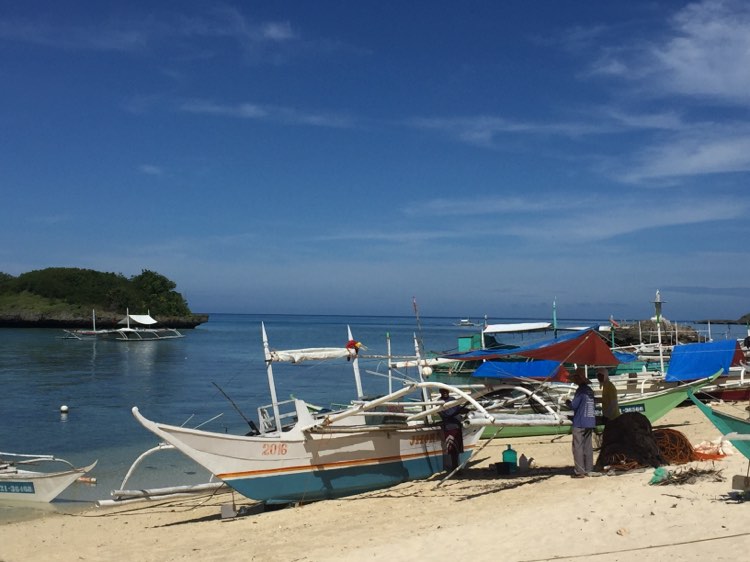
These fishermen prepare to go out to sea. | Doris Bongcac
Most men, including her husband, who had to take a break from his overseas work because of the pandemic, had to go out to sea to fish while the women had to stay at home to care for their families. They also do other tasks like drying fish and backyard gardening to grow some of the vegetables that they need.
And since they live on a fishing village, they travel to the neighboring Masbate province or at mainland Daanbantayan to get their supplies.
/dbs
Related Stories
Experience a fun summer escape in Carnaza Island
A day in the life of a fisherman in Malapascua
Boat captain from Malapascua feels ‘pandemic’s pinch’ as fewer tourists visit island
When fishermen in an island in northern Cebu take a break from catching fish
In Photos: Gwen reopens tourism activities in Malapascua Island
Photographer captures stunning photos of Malapascua Island amid pandemic
Look: Let’s take a bath at the beach!

